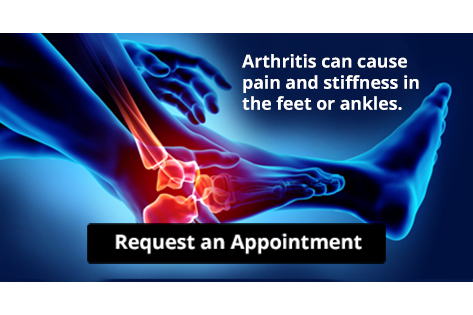Blog
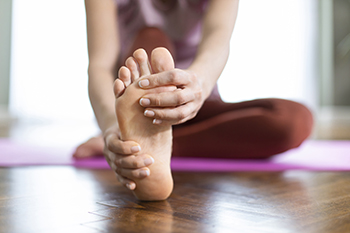
Involuntary toe movement, such as twitching, curling, or shifting without conscious control, can be unsettling and may signal an underlying issue. This symptom is sometimes associated with a condition called moving toes syndrome, which can occur alongside nerve or spinal problems. People often describe a sensation of restlessness or find their toes wiggling even when they try to keep them still. While not always painful, the movement can interfere with sleep, balance, and daily comfort. Causes may include nerve injury, medication side effects, or other neurological conditions, and the symptoms can develop gradually. Even if the movements seem minor, they should not be ignored. A thorough evaluation can help determine whether the issue is isolated or part of a larger pattern affecting your foot health. If your toes are moving without your intention or you are noticing unusual sensations, it is suggested that you see a chiropodist for an examination, diagnosis, and appropriate treatment.
Toe pain is common and can have a variety of causes. Causes can range from a broken toe to an ingrown toenail. Many types of toe pain can be corrected, but any toe pain that inhibits your activities for an extended period should be discussed with a chiropodist. If you suffer from toe pain, please consult with one of the chiropodists from The Footcare Centre. Our chiropodists can help you maintain the health of your feet.
Common Causes of Toe Pain
- Trauma or fracture
- Cuts, sores, or bruises
- Rheumatoid arthritis
- Gout
- Turf Toe
- Morton’s neuroma
- Blisters
- Corns
- Bunions
- Hammertoes
- Ingrown toenails
- Plantar warts
- Athlete’s Foot
Symptoms of Toe Pain
- Toe deformity
- Burning
- Numbness
- Toenail deformity
- Wart or ulcer
- Swelling
- Redness
When to See a Chiropodist
- Bleeding or severe swelling
- Trauma, such as a broken bone
- Discoloration or extreme swelling
- Inability to bear weight
- Persistent pain
- Wounds that won’t heal
Diagnosis of Toe Pain
A chiropodist can conduct a thorough examination of the painful toe or toes in order to determine the best course of treatment. The exam may include assessing the tenderness of the area, taking an X-ray or other diagnostic test, or assessing your gait and range of motion. A discussion of what led to the advanced pain issue may follow. Included will likely be a health history, as well as a list of medications you are taking and other previous injuries you may have sustained.
Treatment for Toe Pain
With such a wide range of possible causes for toe pain, treatment can be varied in scope and length. Sometimes, the chiropodist will recommend lifestyle and activity changes. In cases of trauma or other injuries, X-rays or imaging tests will likely be used to determine the severity of the problem, particularly if any bones have been broken. Treatment may also include injections of pain-relief medication or anti-inflammatory drugs. Certain injuries will require the splinting, bracing, or wrapping of injured toes. Orthotics or special shoes may be prescribed in cases of bone deformities and gait issues. Removal of warts, calluses, and corns may be needed. In other cases, such as with patients who have diabetes or rheumatoid arthritis, ongoing treatment may be required to avoid more serious problems.
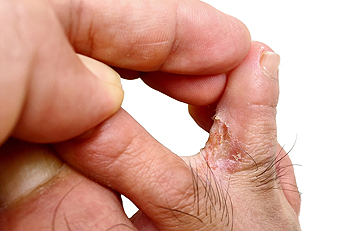
Athlete's foot, also known as tinea pedis, is a fungal infection that affects the skin on the feet. It commonly develops in warm, moist environments, such as locker rooms, public showers, and inside tight footwear. The infection spreads through direct contact with contaminated surfaces or infected skin. Symptoms include itching, burning, redness, and peeling skin, often between the toes. In some cases, blisters or cracks in the skin may develop, leading to discomfort and an increased risk of bacterial infections. Individuals who sweat excessively, wear damp socks for long periods of time, or have weakened immune systems are more susceptible to the infection. Athlete’s foot can be uncomfortable. If you have developed this condition, it is suggested that you consult a chiropodist who can offer you appropriate treatment solutions.
Athlete’s foot can be uncomfortable and unsightly. To learn more about preventing and treating this condition, please consult with one of the chiropodists from The Footcare Centre. Our chiropodists will assess your condition and provide you with quality foot and ankle treatment.
What Is Athlete’s Foot?
Athlete’s foot refers to an infection of the skin on the feet that is caused by a fungus. This fungus is contagious and thrives in warm and moist environments. It is often spread in common areas such as public pools, locker rooms, and showers. It can also spread when sharing personal items, like shoes or towels, with an infected person.
Symptoms
The symptoms of athlete’s foot may include:
Itching, stinging, or burning of the skin on the feet
Cracking or peeling skin, especially between the toes and on the soles of the feet
Scaly, red rash on the foot
Blisters
Foul odor
Treatment
Treatment for athlete’s foot typically involves using over-the-counter topical antifungal medications on the feet. When over-the-counter options are ineffective, you may need to take prescription oral medications or topical antifungal drugs, or a combination of both.
Prevention
Preventing athlete’s foot places an emphasis on good foot hygiene practices.
You can prevent athlete’s foot by:
Washing and drying your feet thoroughly every day
Wearing shoes when walking in public areas
Not sharing personal items, like shoes or socks, with others
Wearing shoes and socks made out of breathable materials
If you have any questions, please feel free to contact our office located in . We offer the newest diagnostic and treatment technologies for all your foot care needs.

Poor foot circulation can arise from several factors that reduce the flow of blood to the extremities. An inactive lifestyle, obesity, and smoking are common contributors, while underlying conditions such as diabetes and vascular disease further impair circulation. Symptoms often include cold, numb, or tingling feet, along with pain and changes in skin color. If untreated, poor circulation may lead to serious complications, such as non healing wounds, infections, or even tissue loss. Reduced blood flow hinders the body's ability to repair itself and can diminish overall mobility and quality of life. Maintaining a healthy lifestyle with regular exercise and a balanced diet can improve circulation and prevent these harmful outcomes. If you have symptoms of poor foot circulation, it is suggested that you schedule regular checkups with a chiropodist who can help you to monitor this condition.
When blood flow to a specific part of the body is reduced, you may experience symptoms of poor circulation. Poor circulation is most common in your extremities, like your legs and feet. Please consult with one of the chiropodists from The Footcare Centre. Our chiropodists will assess your condition and provide you with quality foot and ankle treatment.
Causes
Poor circulation isn’t a condition in itself. Instead, it results from other health issues. Therefore, it’s important to treat the underlying causes:
Peripheral artery disease (PAD)
Diabetes
Blood clots
Varicose veins
Obesity
Raynaud’s disease
Symptoms
Symptoms of poor circulation may include:
Numbness
Tingling
Throbbing or stinging pain in limbs
Pain
Muscle Cramps
Diagnosis
A chiropodist will perform a physical exam to detect pain and swelling, as well as an antibodies blood test to detect inflammatory conditions, such as Raynaud’s disease. It’s important to disclose any known family history of poor circulation and any related diseases. A blood sugar test, blood pressure test, ultrasound, or CT scan may also be performed.
Treatment
Treatments for poor circulation depend on what is causing it. Compression socks may be used to reduce pain and swelling. An exercise program may be recommended to improve circulation. Various medications may be prescribed to manage underlying conditions that may contribute to poor circulation.
If you have any questions, please feel free to contact our office located in . We offer the newest diagnostic and treatment technologies for all your foot care needs.
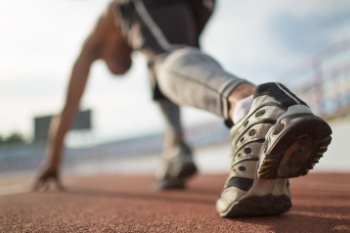
Foot exercises can help alleviate discomfort and improve mobility for someone experiencing various foot problems. Gentle stretching, such as toe flexion and extension, can ease stiffness with minimal discomfort during the exercise, though mild soreness may follow. Strengthening exercises like towel scrunches and marble pickups engage small foot muscles, often causing slight fatigue but rarely significant pain afterward. Low-impact activities such as seated heel raises may create mild discomfort during movement but can promote circulation and reduce stiffness over time. It is important to listen to the body and adjust intensity accordingly to prevent exacerbating pain. If you have foot pain from specific conditions, it is suggested that you consult a chiropodist who can treat various foot conditions, and guide you to appropriate foot stretches for relief.
Stretching and strengthening your feet is very important for maintaining your foot health. If you would like to learn more about exercises for your feet, please consult with one of the chiropodists from The Footcare Centre. Our chiropodists can help you maintain the health of your lower limbs and your mobility.
There are a variety of relatively easy-to-do exercises that can boost the strength, flexibility, and mobility of your feet, as well as relieve foot pain.
Strength exercises:
Toe splay - Spread the toes apart and hold for several seconds; improves control over toe muscles
Toe curls - Scrunch up a towel with your toes; strengthens the flexor muscles
Marble pickup - Pick up marbles with your toes; strengthens the muscles on the undersides of the feet and toes
Walking on sand - Stretches and strengthens feet and calves
Flexibility exercises:
Heel raises - Raise the heels while keeping toes on the ground
Toe point - Raise the heels while pointing the toes, keeping just the tips of toes on the ground
Toe curl - Raise the heels while curling the toes inwards, keeping just the tips of toes on the ground
Big toe stretch - Use your hands to gently stretch your big toes up, down, and to the side
Exercises for foot pain:
Toe extension - Gently pull the toes up towards the ankle and hold for several seconds
Ball roll - gently roll a golf or tennis ball underneath the arches of the feet
If you have any questions, please feel free to contact our office located in . We offer the newest diagnostic and treatment technologies for all your foot care needs.
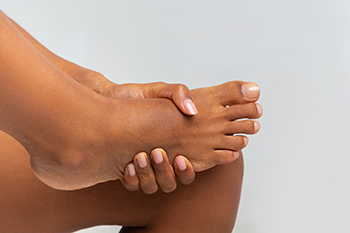
Alcohol consumption can have several effects on the feet, leading to discomfort and potential health concerns. One common issue is foot and leg swelling, caused by fluid retention and poor circulation. Alcohol can lead to dehydration, which disrupts the balance of fluids in the body and contributes to swelling in the lower extremities. Many people experience a sensation of heavy limbs after drinking, making movement feel sluggish and unsteady. Alcohol can also trigger gout, a form of arthritis that causes severe pain and inflammation in the joints, particularly in the big toe. This occurs due to increased uric acid levels in the bloodstream, which form sharp crystals in the joints. If you have foot pain or have developed any of the above symptoms, it is suggested that you consult a chiropodist who can treat various foot conditions and educate you on the effects alcohol may have on the feet.
Foot pain can have many causes. To receive an accurate diagnosis and treatment for your foot pain, please consult with one of the chiropodists from The Footcare Centre. Our chiropodists will assess your condition and provide you with quality foot and ankle treatment.
Causes
There are a variety of different conditions that can cause foot pain, including:
Plantar fasciitis
Deformities, such as bunions or hammertoes
Injuries to the muscles, bones, tendons, or ligaments in the feet
Arthritis
Flat feet
Ingrown toenails
Symptoms
The type and location of your foot pain can help determine what may be causing it and what type of treatment options are best for you.
Common types of foot pain include:
Heel pain
Arch pain
Toe pain
Ball of foot pain
Pain that has a stabbing, burning, or tingling quality
Pain that is constant, intermittent, or that gets better or worse depending on the situation
Diagnosis
A thorough medical history and physical examination of your feet will be required to determine a diagnosis. Imaging studies, such as X-rays or MRIs may be performed to rule out or confirm certain diagnoses.
Treatment
Treatment will depend on the cause of the pain. Common treatments for foot pain include resting, icing, compressing, and elevating the affected foot, wearing orthotics, or taking anti-inflammatory medications.
If you have any questions, please feel free to contact our office located in . We offer the newest diagnostic and treatment technologies for all your foot care needs.

An ingrown toenail is a condition where the edge of the toenail grows into the surrounding skin, leading to pain and potential infection. This commonly affects the big toe and can worsen if not properly managed. Causes include improper nail trimming, wearing tight shoes that put pressure on the toes, genetic factors, or injury to the toenail. Repeated stress from activities such as running or kicking can also contribute to the problem. Symptoms often include redness, swelling, tenderness, and discomfort along the nail border. If an infection develops, there may be pus, increased pain, and warmth in the affected area. Ingrown toenails can be painful and may become serious if infected. If you have developed this condition, it is suggested that you promptly consult a chiropodist who can effectively treat this condition.
Ingrown toenails may require medical attention. If you have significant pain or notice signs of infection from an ingrown toenail, please consult with one of the chiropodists from The Footcare Centre. Our chiropodists will assess your condition and provide you with quality foot and ankle treatment.
What Is an Ingrown Toenail?
An ingrown toenail occurs when the edges of a toenail grow into the surrounding skin. The toenails of the big toe are usually affected, however, an ingrown toenail can happen on any toe. Sometimes, the area can become infected leading to potentially serious complications. The ingrown toenail may be caused by improper trimming of the toenail, wearing ill-fitting shoes, or injury to the nail.
Symptoms
The symptoms of an ingrown toenail include:
Pain
Swelling
Redness
Warmth
Pus or drainage from the affected nail or a fever may indicate an infection of the area.
Treatment
Treatment depends on the severity of the ingrown toenail. In less severe cases, home treatment may be adequate. Soaking the affected foot in warm water and gently lifting the nail from the skin with a piece of clean cotton can help. In more severe cases, you may need to use topical or oral antibiotics to treat an infection. Surgical removal of the ingrown toenail may be required if more conservative treatments fail.
Ingrown toenails may be prevented by wearing well-fitted shoes and properly trimming the toenails. Toenails should be trimmed straight across and not too short when using nail clippers.
If you have any questions, please feel free to contact our office located in . We offer the newest diagnostic and treatment technologies for all your foot care needs.
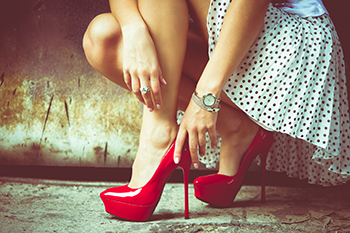
Wearing high heels may enhance a woman’s appearance, but prolonged use can negatively impact her foot health. High heels shift the body's weight forward, increasing pressure on the forefoot and altering posture. This unnatural positioning forces the lower body forward and the upper body backward, leading to muscle strain and discomfort. The higher the heel, the greater the stress placed on the bones, tendons, and joints. Gait is also affected, as the foot is prevented from rolling naturally from heel to toe, causing additional strain on the knees, hips, and lower back. Over time, these changes can contribute to foot deformities like bunions, hammertoes, and neuromas, as well as conditions like Achilles tendonitis and osteoarthritis. High heels also reduce stability, increasing the chances of a sprained ankle or fall. A chiropodist can assess your foot structure, provide guidance on supportive footwear, and recommend treatments for pain or deformities caused by high heels. If you have foot pain from wearing high heels, it is suggested that you schedule an appointment with a chiropodist.
High heels have been in style for centuries, but unfortunately, they have also been damaging feet for centuries. If you would like to learn more about how high heels can hurt your feet, please consult with one of the chiropodists from The Footcare Centre. Our chiropodists can help you maintain the health of your lower limbs and your mobility.
High heels can cause a variety of problems, including:
Foot and ankle pain
Foot and ankle injuries
Toe pain and deformities
Gait abnormalities
Achilles tendonitis
Changes in posture
Difficulty balancing
Leg, hip, and back pain
If you are reluctant to abandon your high heels, you can still wear them, but should take measures to minimize damage to your feet:
Wear shoes with heels no higher than 2 inches
Choose properly fitted shoes
Choose shoes with a wide toe box
Wear high heels infrequently
When wearing high heels, take them off periodically to stretch and relax your feet
If you have any questions, please feel free to contact our office located in . We offer the newest diagnostic and treatment technologies for all your foot care needs.
Blog Archives
- 2025
- 2024
- 2023
- 2022
- 2021
- 2020
